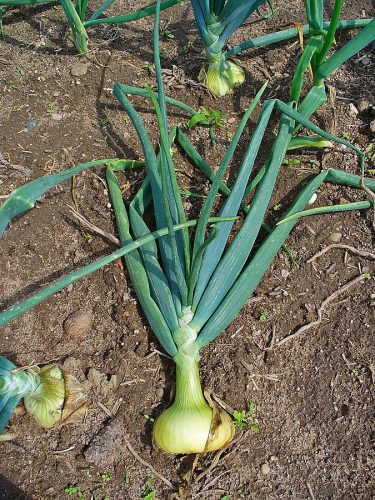You are viewing the mobile-adapted version of the page.
The one for tablets, laptop and desktop also provides general information, such as origin and cultivation.
Onion – (Allium cepa) also called bulb onion, belongs to the amaryllis family (Amaryllidaceae). Onions can be planted as seed onions from March to the end of April. Sowing can also be done: do it in the fall, so you will have your own seed onions in the spring. Onions like firm soil that is not too sandy. Onion fly larvae infest onions. Larvae pupae live underground, which is why crop rotation is important for onions. During wet summers, mold sometimes grows on the leaves: cut it off. Sometimes an onion bolts and forms a flower stem. Remove the flower bud so that the energy returns to the bulb. Use compost to fertilize the onion bed; farmyard manure attracts insects such as the onion fly.
Seed onions planted from March to late April can be harvested in late June, early July. During June, the onion’s foliage began to dry and droop limply. Give the foliage a week or two to wither and then pull the onions out by the dried foliage. Throw moldy or softened onions immediately onto the compost heap. Onions should be dried. Depending on the spot, it takes one to one and a half months. Many gardeners tie the onions in bunches and hang them under a canopy to dry. Drying in a shed or greenhouse on a pallet or a piece of netting will also work, of course. If only air can reach it.
Sow onions in the fall for fall and winter crops so that you will have your own seed onions in the spring. There are special varieties for growing in autumn and winter.
Bugs
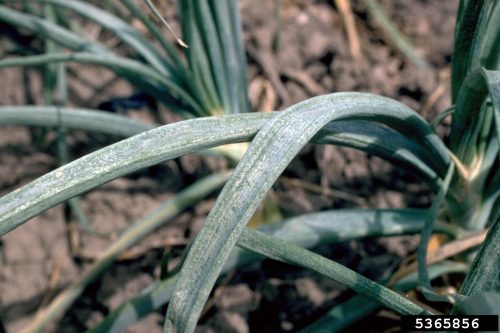
Shiny silver-gray spots on leaf, on the underside are insects: thrips (Thysanoptera).
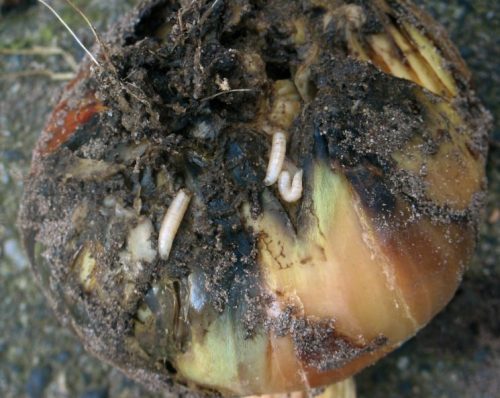
Leaf yellows, dies; plant rots away: onion fly (Delia antiqua).
Plants show tunnels in the onions and contain brown pupae: Allium leaf miner (Phytomyza gymnostoma).
Tunnels and grated leaf surface: Leek moth (Acrolepiopsis assectella).
Pierced roots, tunnels and brown streaks on the root: carrot fly (Chamaepsila rosae).
Onion not growing, root system shows many small root nodules (galls): northern root-knot nematode (Meloidogyne hapla).
Deformed, twisted and here and there swollen leaves: stem nematode (Ditylenchus dipsaci).
Fungi & diseases
Small, yellowish-white sunken spots: Botrytis Leaf Blight (Botrytis squamosa).
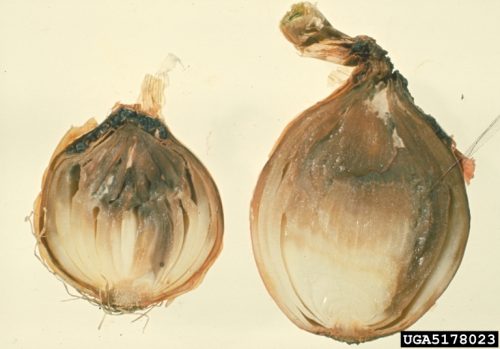
Plant and/or bulb rot away from top to bottom: neck rot (Botrytis allii).
Orange-brown spores on stem: leek rust (Puccinia porri).
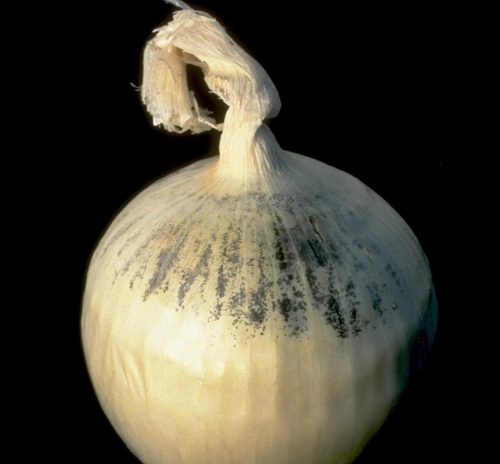
Black spots on the outer skin: infestation by black mould (Aspergillus niger).
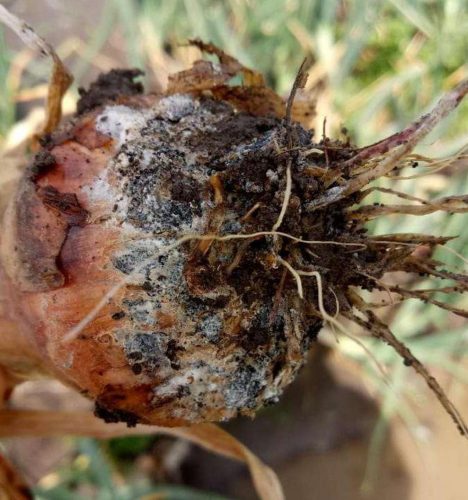
Leaves turn yellow and wilt; lower bulb and roots covered with thick, Onion white rot. There are black spots on the affected parts: Onion white rot (Sclerotium cepivorum).

